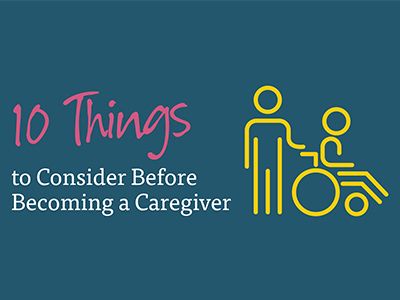Life doesn’t always go according to plan. Sometimes kids and adults end up needing someone to make decisions on their behalf.
That’s when legal options like guardianship and conservatorship come into play. It’s important to understand the differences between guardianship and conservatorship — and when each may be needed.
What is a guardianship?
In a guardianship, a person (the guardian) is appointed by a court to have control over the care, comfort and maintenance of another person (the ward). This generally includes all aspects of the ward’s life except the management of his or her finances.
A guardian’s responsibilities can include:
- Determining where the ward will live.
- Managing the ward’s medical care (with some limits).
- Making decisions on the education, social and recreational needs of the ward.
- Requesting funds for the person’s care and needs from the conservator.
Guardians have a legal duty to act in the best interests of their ward. And they have to demonstrate that they’re doing so through a report they file with the court each year. In this report, the guardian details the ward’s physical condition and living situation — as well as any changes that have happened since the last report.
What is a conservatorship?
A conservatorship, on the other hand, typically relates only to having control over a person’s (the ward’s) finances. The court-appointed conservator manages the ward’s financial affairs— including real estate, bank accounts, investments and other assets. A conservator generally doesn’t have any responsibility for non-financial decisions relating to the ward.
Conservators are legally bound to manage assets in the best interests of the wards. To make sure this is being done, the court generally requires the conservator to provide documentation each year showing how the money is being managed.
The conservator also must follow the court’s orders on how the ward’s money is spent. “The conservator can’t simply write out a $15,000 check to purchase a vehicle for the ward, for instance,” explains ARAG Attorney Katie Raisch, an attorney with Carney Appleby Law in Des Moines, Iowa. “The conservator must motion the court, and the court typically has to pre-approve those types of larger purchases.”
There are typically three types of conservatorships:
- Limited conservatorship. In this arrangement, the conservator only has certain powers. Those powers are determined by the ward’s abilities. For instance, if the ward can manage his or her daily expenses but not any investments, the conservatorship would apply only to investments.
- Temporary conservatorship. This can be granted when the ward’s needs are temporary or when another conservatorship is pending. The length of a temporary conservatorship is usually around 90 days.
- Full (or plenary) conservatorship. Under a full or plenary conservatorship, the conservator has complete control of the ward’s finances. This is generally a last resort but can be necessary when the ward is clearly unable to manage any aspect of his or her estate.
Situations requiring guardians and/or conservators
Guardianships and conservatorships can be used in a variety of situations. Most commonly, they’re used for minors, incapacitated seniors and developmentally disabled adults.
For minors
Minors generally need a guardian and/or a conservator if both parents have passed away or are otherwise unavailable. In this situation, a guardian is almost certainly required. A conservatorship may not be needed, however, unless the child is the beneficiary of a life insurance policy or has other financial assets.
When both a guardian and a conservator are needed, the court may allow one person to assume both roles. In other situations, the courts will require one individual to serve as a guardian and another to serve as the conservator.
For incapacitated seniors
For older adults who are no longer able to make their own decisions — such as those with Alzheimer’s — guardianships can literally be lifesavers. Once the ward’s need for a guardian has been proven to the court (through a letter from the ward’s physician, for instance), the guardian can generally make decisions like whether or not the ward needs to be in a care facility.
Incapacitated seniors also generally require conservators to manage their financial holdings. The court oversees these arrangements very carefully. “There are an increasing number of elder abuse cases being filed recently. The courts are sensitive to this issue and monitor these cases to ensure the conservators are fulfilling their ethical obligations and acting in the best interests of the ward,” says Raisch.
For developmentally disabled adults
The guardianship and/or conservatorship needs for developmentally disabled adults can vary quite a bit. It all depends on the abilities and limitations of the ward.
Ideally, the process should start when the potential ward is 16 or 17. “That’s when parents typically start talking to an attorney about filing a conservatorship and guardianship,” Raisch says. “The process takes time, and the goal is for the legal arrangements to take effect the day the potential ward turns 18.”
Get professional guidance on conservatorships and guardianships
Decisions about guardianships and conservatorships can be complicated. Conservatorships, for instance, are generally a lot more work than guardianships in terms of the legal process. But in some situations (and depending on state law), a conservatorship may be the better option.
It’s a good idea to consult with an attorney to discuss the specific circumstances. He or she will weigh the pros and cons, costs and needs — and recommend the best path for those involved.



